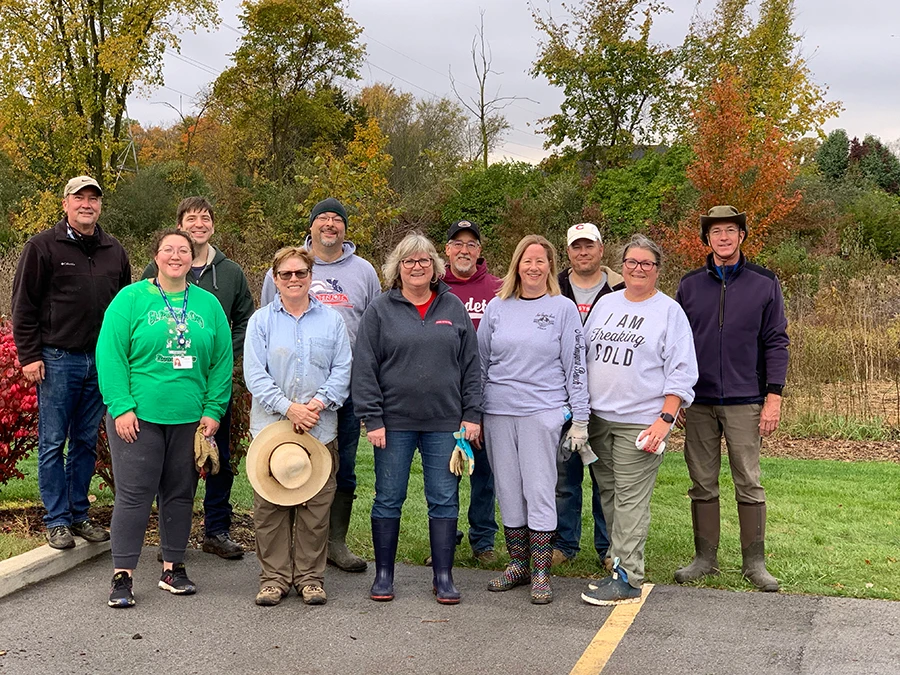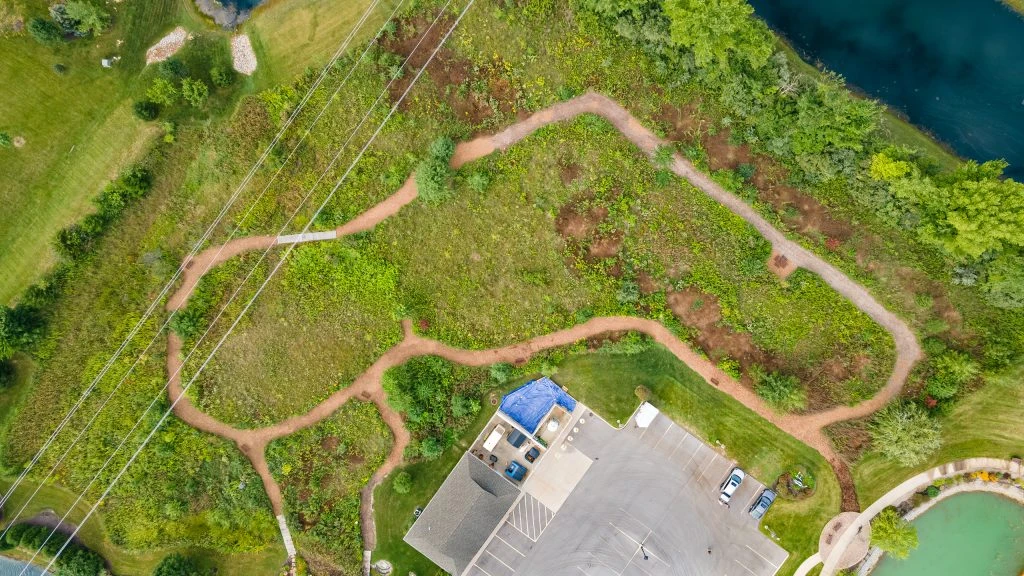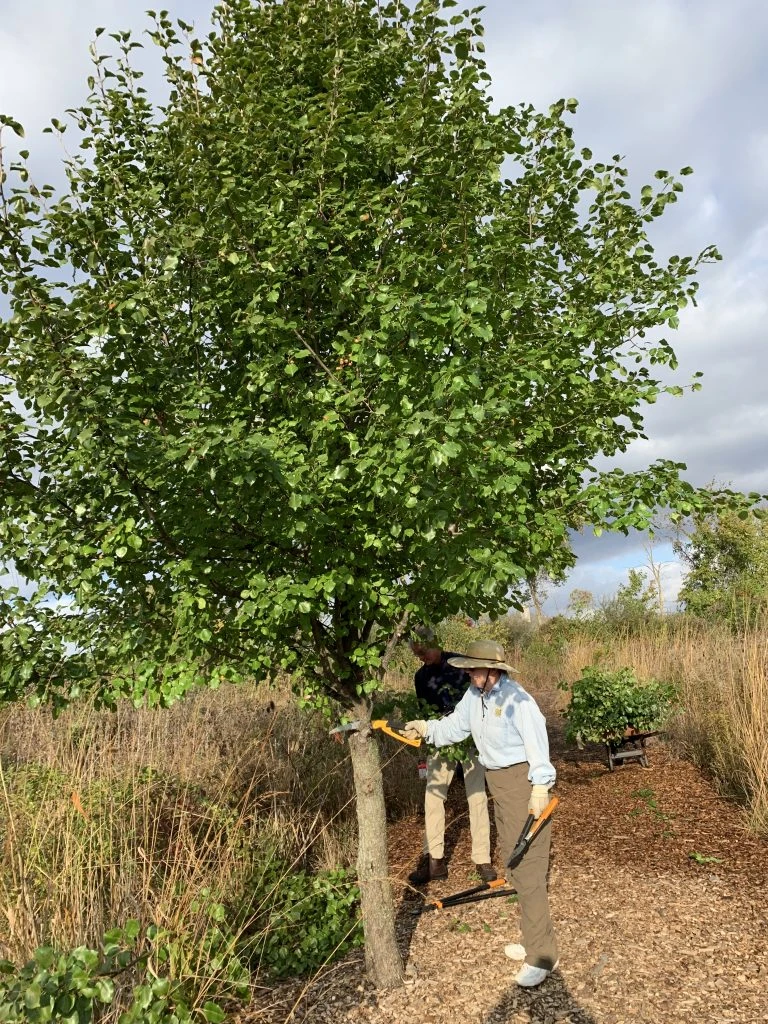

Stillwater Hospice’s eight-acre campus includes nearly two acres of restored prairie. Stillwater Hospice planted this prairie in 2006 as a place for patients, families, and employees to gain peace and comfort. Once farmland, and before that a native forest, today it provides us the chance to view plants that have endured for centuries, as well as wildlife that prairies sustain. Prairie ecosystems support a vast quantity of life both above and below ground and are one of the most diverse ecosystems in the world. Our Stillwater prairie is just one mile north of the nature preserves in the Little River Valley, making this space an oasis, or extension, for the wildlife supported nearby. Together, they help ensure ecological diversity and natural wonder for future generations. We invite you to take a moment to stroll along the mulched paths and experience nature’s peace.
You can join our “prairie posse” and help ensure the prairie’s health by contacting our Volunteer Department at (260) 435-3222. Learn more about the Little River Valley’s ecosystem here: https://www.lrwp.org/littlerivervalley.
The native flowering plants, grasses, and sedges that grow in prairies have extensive root systems that create channels for water to slowly percolate into the ground. Their deep roots prevent erosion and require less water than shallow-rooted non-native species. Underground organisms thrive amongst the organic roots, making prairie earth rich and hospitable. Above ground insects, pollinators, and animals thrive amidst the attractive native plants, including in the winter, making native prairieland a year-round habitat.
You can help provide food and habitat for pollinators and other insects by planting native plants in your yard.
Animals and insects you may see:
- Minks
- Foxes
- Coyotes
- White-tailed Deer
- Bald Eagles
- Hawks
- Herons
- Cranes
- Songbirds
- Voles and Moles
- Frogs
- Bees
- Butterflies
- Praying Mantises
Flowering native plants you may see:
- Aster
- Bee Balm
- Black-eyed Susan
- Blue Vervain
- Milkweed
- Compass Plant
- Culver’s Root
- Coneflower
- Goldenrod
- Hemp Dogbane
- Indigo
- Ironweed
- Foxglove Beardtongue
- Mountain Mint
- Ohio Spiderwort
- Prairie Rosinweed
- Rattlesnake Master
- American Senna
- Yarrow






